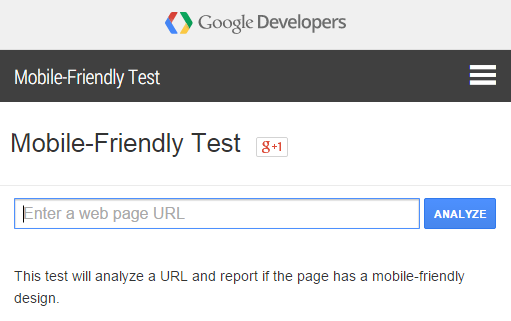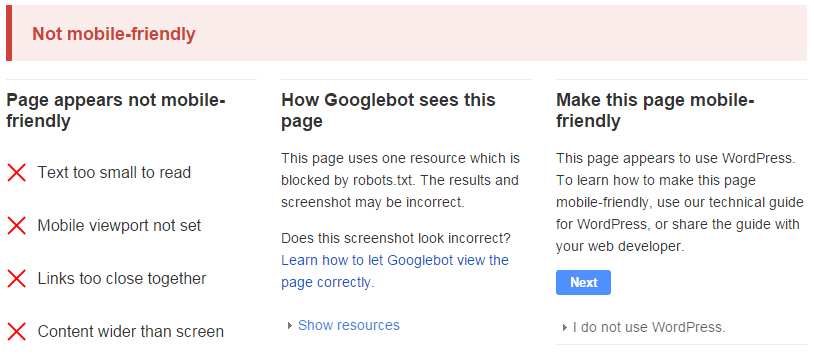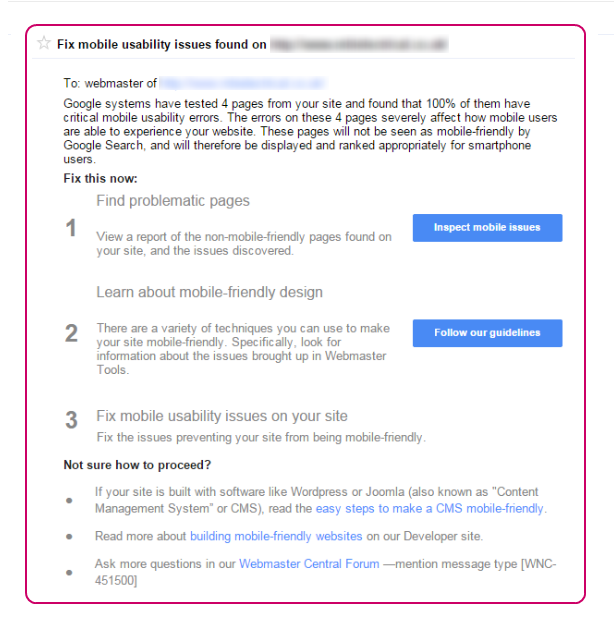The growth of mobile Internet usage has been enormous in recent years, and it has already overtaken the desktop as the primary method of getting online.
Additionally, a study Search Engine Land suggested by the end of 2015 mobile could account for 50% of paid search clicks.
[Tweet “Is your site mobile optimised? If not, you could face a drop in the search rankings. Learn more…”]There’s no doubt that the Internet is diversifying to compensate for the fact that more and more people are using their smartphones, tablets and other devices to get connected and, recognising this fact, Google is also adapting the way in which it ranks online content in the search results pages.
Related: Why responsive design matters more than ever
Mobile Friendliness Algorithm Update
On February 26, 2015, Google announced that they will be updating their algorithm yet again in order to deliver more mobile-friendly results on mobile devices.
In other words, websites that are not properly optimised for mobile browsing will no longer have as much visibility in mobile search results.
The changes, due to be rolled out on April 21, will have affect mobile searches in all languages supported by the world’s largest search engine.
These changes will allow mobile users to get more relevant results, and as far as online marketers and webmasters are concerned, mobile friendliness will become a more important ranking factor than ever before.
Mobile Usability Warnings
To alert webmasters of the upcoming changes and to encourage them to adopt a mobile-friendly strategy, Google is already sending mobile usability notifications via Webmaster Tools.
In other words, if your website does not currently provide an optimal user experience on mobile devices, Google will quickly let you know. The message looks like this….
Webmaster Tools titles the notification “Fix mobile usability issues found on (yourwebsite.com)” before breaking down the issues one-by-one to tell you precisely which pages on your website are causing the problems.
If your website receives such a notification, you may notice a sudden drop in search engine traffic in the coming months due to the fact that it will no longer appear in search results conducted on smartphones or tablet computers.
These new warnings are quite different to the broken mobile site penalty that Google started dishing out in 2013.
Rather than focusing on technical errors with your website, the new notifications are primarily targeted towards webmasters that knowingly do not provide mobile-friendly websites.
Affects Mobile Search Results Only, Not Desktop
Webmasters should consider these warnings to be friendly advice to fix the issues concerned if they want to improve their visibility in mobile search results, although desktop search results should not be affected.
Your website should still retain the same position in the search results for anyone searching from a laptop or desktop computer or mobile users using the desktop version of the search engine. However, these users are already in the minority, making it clear that you now need to prioritise mobile.
Affects Pages, Not Entire Websites
Fortunately, the algorithm will not be applied to entire websites, but rather on a page-by-page basis. Additionally, the changes launched in April will have an immediate effect on searches worldwide, rather than just being rolled out in the US first, as has been the case with many previous algorithm updates.
Thanks to the fact that the algorithm only assesses individual pages rather than websites, it will not necessarily harm your entire website.
For example, if you run an e-commerce store with a mobile-friendly interface, yet other content on your website is not optimised for mobile, your online product catalogue should not be effected.
Mobile search results are already annotated to show you which sites are mobile friendly, and which aren’t.
 Mobile search results with “mobile friendly” annotation
Mobile search results with “mobile friendly” annotation
One might assume this annotation may vanish completely after the roll out, as perhaps only mobile friendly sites will be displayed in mobile searches in future.
Precisely how the ranking order will change remains to be seen, although Google has stated that the algorithm will have a ‘significant’ impact on all mobile search results worldwide.
Testing Your Website
The sooner you test your website for mobile usability, the better.
Google provides a useful Mobile-Friendly Test as a new Webmaster Tool, and all you need to do is enter your website’s address, click “Analyse,” and Google will tell you whether it is mobile-friendly or not.

If, on the other hand, the website is not mobile-friendly, the results will be accompanied by a warning as well as a list of individual issues that need to be fixed.
For example, the text of your website might be too small to read or a mobile viewport might not be set.
 A site that has failed the mobile-friendliness test!
A site that has failed the mobile-friendliness test!
Most helpfully, the testing facility will also provide all of the information needed to make your website mobile-friendly whether you’re using a CMS, you built the website yourself or you hired someone else to do it for you.
Your Say!
Is your site mobile optimised? How much of your traffic is from mobiles? If not, do you plan to get mobile after this update? Give us a shout below.


3 thoughts on “Mobile Friendliness is now a Ranking Signal”
Comments are closed.